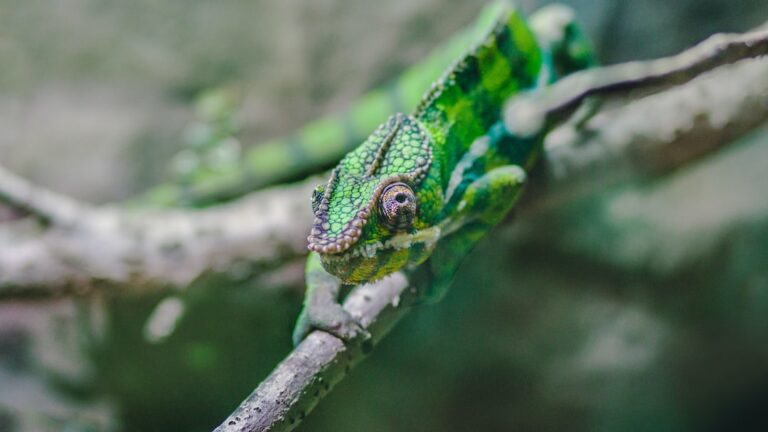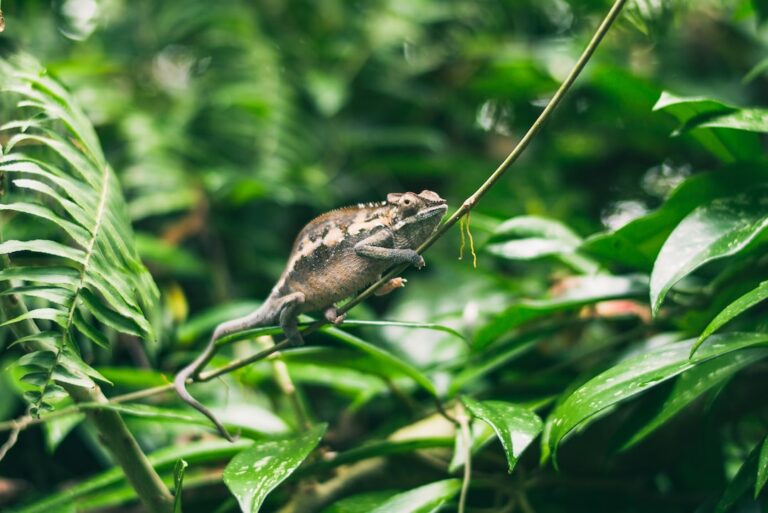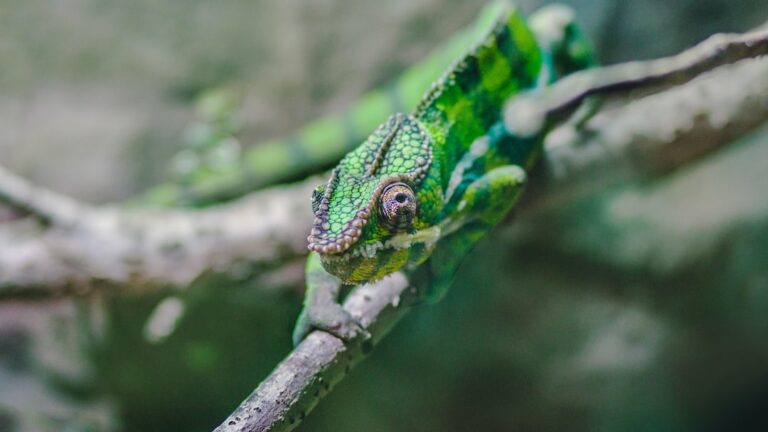What Do Chameleons Use Their Tails For?
Chameleons are fascinating creatures known for their ability to change color and blend into their surroundings. They belong to the family Chamaeleonidae and are found in various parts of the world, including Africa, Madagascar, and parts of Asia and Europe. Chameleons have unique characteristics that set them apart from other reptiles, such as their independently moving eyes, long tongues, and prehensile tails.
The tail of a chameleon plays a crucial role in its survival and behavior. It serves multiple purposes, including camouflage, defense, communication, balance, and energy storage. Understanding the anatomy and functions of chameleon tails can provide valuable insights into these remarkable creatures.
Table of Contents
The Anatomy of a Chameleon’s Tail
Chameleon tails are long, slender appendages that are typically longer than the rest of their bodies. They are made up of a series of vertebrae covered by specialized scales called osteoderms. These scales provide protection to the tail while allowing flexibility and movement.
The structure and composition of chameleon tails can vary between different species. Some chameleons have prehensile tails that are capable of grasping objects, while others have non-prehensile tails that are used primarily for balance and stability. The coloration of the tail can also vary, with some species having brightly colored tails for display purposes.
Camouflage and Defense Mechanisms of Chameleon Tails
One of the most well-known functions of chameleon tails is their ability to camouflage with their surroundings. Chameleons can change the color and pattern of their skin to match their environment, and this includes their tails. By blending in with their surroundings, chameleons can avoid detection by predators or prey.
In addition to camouflage, chameleon tails also serve as a defense mechanism. When threatened, a chameleon can curl its tail and present it as a warning to potential predators. Some species of chameleons have spiky or bumpy tails that can deter predators from attacking. In extreme cases, chameleons can even detach their tails as a means of escape, allowing them to regenerate a new one later.
Communication and Social Interaction with Chameleon Tails
Chameleon tails are not only used for survival but also for communication and social interaction. Chameleons can use their tails to convey messages to other members of their species. For example, a raised tail may indicate aggression or dominance, while a lowered tail may signal submission or fear.
Tail movements and gestures are also important in chameleon behavior. A wagging tail can be a sign of excitement or anticipation, while a slow swaying motion may indicate relaxation or contentment. Chameleons can also use their tails to signal their readiness to mate or to establish territory boundaries.
The Role of Chameleon Tails in Reproduction
Chameleon tails play a significant role in the reproductive behavior of these creatures. During courtship, male chameleons often display their tails in elaborate dances or displays to attract females. These displays can involve puffing up the tail, vibrating it, or displaying bright colors.
In some species, the female chameleon may also use her tail to signal her receptiveness to mating. By raising her tail or displaying certain colors, she can indicate her readiness to mate with a male. The tail is an essential tool in the complex courtship rituals of chameleons.
Tail Use for Balance and Stability in Chameleons
Chameleon tails are not only used for communication and reproduction but also for balance and stability. Chameleons are arboreal creatures, meaning they spend most of their time in trees. Their long tails act as a counterbalance, allowing them to maintain stability while climbing and moving through the branches.
Chameleons can also use their tails as an anchor point when hunting or capturing prey. By wrapping their tails around a branch or stem, they can stabilize themselves while extending their bodies to catch insects with their long tongues. The tail acts as a crucial tool in the hunting and feeding behaviors of chameleons.
Hunting and Feeding Behaviors of Chameleon Tails
Chameleon tails play a vital role in the hunting and feeding behaviors of these creatures. Chameleons are primarily insectivores, and they use their tails to assist in capturing prey. When hunting, a chameleon will carefully position itself on a branch or leaf, using its tail for balance and stability.
Once the chameleon spots its prey, it will extend its body forward, using its tail as an anchor point. With lightning-fast speed, the chameleon will shoot out its long tongue to capture the insect. The tail helps to stabilize the chameleon’s body during this rapid movement, ensuring a successful catch.
Tails as a Source of Energy Storage for Chameleons
Chameleon tails also serve as a source of energy storage for these creatures. Chameleons are ectothermic animals, meaning they rely on external sources of heat to regulate their body temperature. During periods of low food availability or cold weather, chameleons can draw upon the fat reserves stored in their tails for energy.
The ability to store fat in their tails allows chameleons to survive during times when food is scarce. It also provides them with the energy needed for reproduction and other essential activities. The tail acts as a reservoir of energy that can be tapped into when needed.
Regeneration and Healing of Chameleon Tails
One of the most remarkable features of chameleon tails is their ability to regenerate and heal. If a chameleon loses its tail due to predation or self-detachment, it can regrow a new one. The process of tail regeneration involves the formation of a specialized tissue called blastema, which contains cells capable of differentiating into various tissues.
Over time, the blastema develops into a new tail, complete with vertebrae, scales, and other structures. The regenerated tail may not be an exact replica of the original, but it serves the same functions and allows the chameleon to continue its normal activities.
The Importance of Chameleon Tail Conservation and Protection
Given the vital role that chameleon tails play in their survival and behavior, it is crucial to prioritize their conservation and protection. Unfortunately, chameleons face numerous threats in their natural habitats, including habitat loss, climate change, and illegal pet trade.
Conservation efforts should focus on preserving chameleon habitats and implementing measures to reduce human impact on these ecosystems. Additionally, education and awareness programs can help promote the importance of chameleon tails and the need for their protection.
In conclusion, chameleon tails are remarkable structures that serve multiple functions in the survival and behavior of these creatures. From camouflage and defense to communication and reproduction, chameleon tails play a crucial role in their daily lives. Understanding and appreciating the importance of chameleon tails can help us better protect these fascinating creatures and ensure their long-term survival.
If you’re curious about the fascinating world of reptiles, you might also be interested in learning about why turtles dig holes. Turtles are known for their impressive digging abilities, but have you ever wondered why they do it? Find out more in this informative article from Reptile Friend: Why Do Turtles Dig Holes? Discover the reasons behind this behavior and gain a deeper understanding of these amazing creatures.







